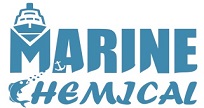
Heat Transfer Salt
Product Qty Per Unit:
50.00
Product usage unit:
Kg.PWD
Product Delivery Locations:
Mumbai, JNPT, Nhava Seva, Pirpav Jetty, Ballard Pier, Mumbai Port Trust, Butcher Island, ONGC EMR Shed, MIdc, Pune, Maharastra
Generic Name:
Salt to avoid contact of direct-fire heating
Salt inhibited with the corrosion inhibitor resulting corrosion protection, as well as efficient heat transfer.
Product Description:
Salt inhibited with the corrosion inhibitor resulting corrosion protection, as well as efficient heat transfer. Heat Transfer Salt with the increased use of high-temperature operations, the chemical and petroleum process industries need an economical, efficient, heat transfer medium
Product Application:
Heat Transfer Salt kept in between steam and direct-fire heating. Heat Transfer salt has low melting point to create a molten salt bath also have high heat transfer rate and its proprietory blend of heat transfer salt is stable at high temperatures, and is non-corrosive to steel. The salts are used for indirect heating and cooling or as quenching baths in the annealing of iron and steel.
Product Procedure:
Product Note:
Product Technical Specification:
| Main Ingredients | : | Salt Mixture with Corrosion Inhibitor |
|
Inhibitors and
water
6
Inhibitors
|
: | 6 % |
| Colour Bright | : | Yellow |
| Nitrite Content | : | 7.5 to 8.5% |
| Chloride Content | : | 0.10% Max. |
| pH of solution | : | 9.5 - 10.5 |
| Odour | : | PRACTICALLY ODOURLESS |
| Solubility in water | : | SOLUBLE |
| Melting Point | : | Max 150 - 155 °C |
| Working Temp Range | : | 155 – 540 Deg.C |
| Density @ 20 Deg.C | : | 1160 Kg/m3 |
| Reverse Alkalinity | : | Minimm 15.0 ml |
| Vapour pressure | : | .07 mbar at 20oC |
| Hear Transfer Salt TR | : | 155 |
| Skin absorption/irritation | : | YES |
| TLV Country | : | |
| Pollution category 1994 | : |
III |
Product pack size:
25, 50 Kg. Bag and JAR packing
Product alias:
<p>
Quadtherm Heat Transfer Salt</p>
The molten salts most commonly used in heat transfer applications are the nitrate salts due to their low melting point, high operating temperature, thermophysical properties, low toxicity, low vapor pressure and corrosion performance.
The most common nitrate molten salts generally are a eutectic blend of sodium nitrate and potassium nitrate. Individual salts can be used, but by combining the two different salts together, the melting point is reduced. This allows for lower minimum operating temperatures and thus reduces the chance of freezeup. Sodium nitrate has a melting point of 584°F (307°C), and potassium nitrate has a melting point of 631°F (333°C). By mixing the two together, however, you can create a salt blend with a melting point of 431°F (222°C). This significantly expands the operational flexibility of the salt used in high temperature applications.
Temperature Range of Heat Transfer Salt?
Molten Salt ( The sodium nitrate/potassium nitrate salt ) Can Operate generally is used from 545 to 1049°F (285 to 565°C)
Benefit of Heat Transfer Salt Generally, nitrate salts provide a balance of wide operating range, thermal stability, corrosion performance and cost.
Advantage of the nitrate salts is corrosion performance . Nitrate salts are compatible with stainless steels up to 1049°F (565°C) and even carbon steel if the operating temperature is kept below 752°F (400°C). This makes them advantageous to use with common materials of construction to keep costs low. It is not advised to use yellow metals such as copper or brass with molten salts because they are not as compatible as steel at higher temperatures.
Heat Transfer Salt Molten salts are also used in applications of solar power plants (CSP), where the salt can store heat obtained from sunlight for long periods of time. Some of these CSP systems flow the salt directly through the receiver tubing, where sunlight hits a parabolic mirror and concentrates the sunlight to a tube in which the salt flows.
Other systems may use molten salts for preheating natural gas lines or keeping reactors hot by using the molten salt in the jacket around a tank. Salts also have relatively high latent heat capacity — similar to many of the phase-change waxes that are used today — and are sometimes used in phase-change applications. When salts melt, they absorb large amounts of heat, and when they freeze, they release large amounts of heat. By utilizing this phenomenon, it is possible to create advanced thermal storage or temperature-regulating systems, depending on the process.
Heat Transfer Salt manufacturer and supplier in Mumbai, Kandla, Chennai, Kolkata, Visakhapatnam, Barka - Oman, Muscat, Fujairah, Dubai, Sharjah, Abudhabi, Ajman, Oman Muscat Barka, Canada, Nairobi Kenya, Uganda Africa, Bahrain
Remarks:
Why use Heat Transfer molten salts?
Heat Transfer Salt extend the upper range of the temperature limits in which a liquid heat transfer media can be used.




